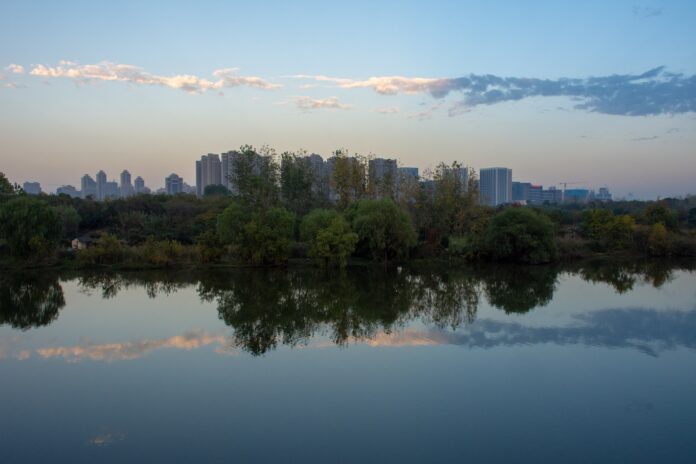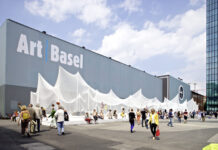In Part 1, we saw how our health is largely dictated by gut microflora, and how the modern lifestyle has negatively influenced the microbial balance. In this section, the possible relationship to the COVID-19 pandemic will be linked to the microbial famine, and what we could do.
The COVID-19 virus is causing severe illnesses to the elderly, and to people who have already lung or other organ disorders/illnesses. The question many are asking is why the elderly are severely infected, but we hardly seeing small children with severe symptoms?
The elderly has a lowered immune system, and children, even infants, have a strong active immune system. Recent research has demonstrated that the immune system is very much determined by the gut – poor gut health will result in a diminished immune system. As demonstrated in Part 1, the gut health is determined by the gut microflora. Babies are usually born with a strong and healthy gut microflora. As we age, the gut microflora matures and changes in gut ratios to the typical adult microflora – this is the peak of gut health. However, as we age, the gut microflora decreases, and variety decreases. This is a main reason why the elderly has a compromised immune system.
Microbial diversity, as in all natural systems, is vital for a healthy system. Healthy plants, healthy soil, healthy water bodies, and our human health are all dependant on maximum microbial diversity, in high numbers and in the correct proportions. The elderly naturally has a lowered microbial diversity and poor proportions. Also, the modern lifestyle has already lowered our immune system, in general, as it does not support the gut microbiome, but worsens it.
There is some evidence that the COVID-19 virus is at it’s most infectious and lethal in heavily polluted areas. Gut microbial health is also now linked, indirectly, to the health of the lungs. Therefore, the low general gut microbial health, the negative effects of pollution on the lungs, and the lowered microbial diversity of the elderly could be a series of factors leading to the high infection rates, and high death rates.
It is no wonder, that the doctors in China are not taking any chances, and are prescribing probiotics in conjunction with medication to the critical patients. They are treating the lungs, aiding the immune system, and restoring the gut health, as a combination treatment to fight this virus.
It has been confirmed that the virus hides in the gut, especially when there is an unbalanced gut microbiome (when the lung pathogen Prevotella numbers are high in the gut). Sewage treatment plants have been discovered to be a good testing area for detecting the virus, as a way to monitor the pandemic severity. There are patients who are still tested positive, after remission, making personal isolation longer; and the virus hiding in an unbalanced gut could be the answer why.
There are many habits in our modern lifestyle which needs to change, in order to restore and strengthen our immune systems, and in the hope of preventing future pandemics.
The first thing is to return natural and beneficial microbes back into our environment; we got to find ways to replenish our gut microbes.
There are many cases where agriculture is changing for the better: better understanding of soil and plant health, the concept of ‘farming the soil microbiome and not the crops’, biological and sustainable farming, reduction of chemicals, and even the use of agriculture ‘probiotics’. But, mass conventional agriculture can never restore the once abundant microbiome on our foods. Biological farming definitely is better in terms of obtaining natural beneficial microbes. Home gardening is also a better choice – grow your own food. However, growing your own food mut be chemical free, and use compost instead of fertilisers (otherwise it could be worse than conventionally farmed goods).
Returning nature into cities is a good option. Lots of trees, lots of grass-parks, flowers etc, all can help with some natural microbes. But then, the people must spend time in the parks.
The additional aspect is our homes and work offices. Offices and buildings which are micro-climate, i.e. air-conditioning units which circulate air, are proven to be very unhygienic. They circulate germs around the building creating phenomenon called the ‘office flu’. And businesses spend a lot of money in sterilising the air-conditioning systems.
Our houses are disinfected. We have been taught to kill every microbe in the home, and that they are ‘all bad’. This concept is very bad, very dangerous, and very misleading. The famous ‘kills 99.9% of all bacteria killed’ statement is never true. Only in the lab setting can this be reached, but in reality, it is more like 70% bacteria which are killed.
Natural microbial systems which are in a balance are very strong to the community concept. They will not allow pathogens in the community. Having natural healthy bacteria on surfaces can, and will, prevent contamination of pathogens. Sanitisers kill more ‘good’ bacteria than the bad bacteria. Therefore, if a sanitiser kills 70% bacteria, but kills more good bacteria, what is left on a surface (remaining 30%) is largely the pathogens that we wanted to get rid of in the first place! With no competition from the good bacteria, the pathogens can dominate the surface (worse than before) after several hours, after sanitising.
Then, doctors have been prescribing antibiotics a little too often, killing and reducing many healthy bacteria in our guts and bodies. This same concept applies, little good microbes results in pathogens dominating (think of hospital related infections).
We are living in a negative feed-back system, worsening our human gut microcosm. This is one of the main reasons we are witnessing the great COVID-19 pandemic. We are generally unhealthy.
Unfortunately, during this pandemic, we must sterilise our homes. There is no question about it. However, there are good cleaning products containing probiotics on the market. After sanitising, use the probiotic soaps. However, please note that diversity is key, so use one that has many different microbes.
Return to nature as often as you can, not just to replenish your sanity, but your microcosm. Start gardening again, and get your hands dirty with the compost. Stop using disinfectant soaps (even with this pandemic, good soap and water is sufficient). After the pandemic, stop disinfecting your entire home as soap is adequate. Eat healthy food. A diversity of microbes in your gut must have a diversity of food types. This means stop simple carbohydrates, eat whole wheat bread, eat different seeds and nuts, variety of biological sourced fruits and vegetables (the more uncooked the better). Eat fermented foods. Take probiotics for general health, which have a diversity of microbes. And open your windows – fresh air is better than the air-con.
Regarding the pandemic, we could even go as far as saying that we should not trust other people’s microcosm – so it is suggested that the days of hand shaking and hugging colleagues and new people we meet, should be stopped. Rather bow to each other, or such gesture. People who have a cold, or slightly ill should not be allowed to go to work, regardless of the economical impact (working from home if possible). Wearing masks in public could be made the normal cultural routine internationally.
The modern world is developing more, and it is unthinkable to go backwards. So, we must find new ways to adapt, develop new cultural habits, and new social interactions.
Look after your microcosm, and it will look after you.








